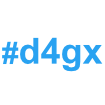Q: Where will the next big app be created?

A: Not where you might think
What are our friends at building tech startup Proving Ground doing in Omaha, Nebraska? Why are our clients Datto heading up to Rochester, NY? How’s a young data company supposed to disrupt an industry when they're not playing ball in Silicon Valley (or Silicon Alley)?
While we at PLASTARC are always (and we mean always) thinking about the connections between people and spaces, the back-to-school season gets us thinking about the unique relationships between school, work, and place. With a work-anywhere economy on the rise, we're especially keen on historic towns across America, replete with beautiful architecture and high on the walk-ability index.
Read down to the On Our Minds section for some people-powered insights about why the next app you install or software you buy stands an increasingly good chance of hailing from the likes of Provo, Utah—not Palo Alto.
On our minds
They’re popping up in Nebraska. And Toronto. And Nashville. And Rochester.
What these promising young startups doing in mid-size, often mid-country cities, instead of setting up shop on our nation’s hip-and-happening coasts?
Well, they’re 1) siphoning fresh talent from nearby universities, 2) slashing their real estate costs, and 3) raking in tens (or hundreds) of millions of dollars in venture capital from eager funders.
Any hands going up to ask just how they’re managing all that? Here’s our take.
As entrepreneurial businesses become increasingly important actors on the playing field of global economics, we’ve found that a university presence is a major draw for those selecting a first or new location—especially tech companies and others who value strong links to startup culture. Meanwhile, these comparably small towns offer unique opportunities for work-life balance.
This means that some surprising mid-size cities, thanks to their strong academic presence, are now becoming major hot spots for tech talent: see Omaha and nearby Lincoln (home of the University of Nebraska system and companies like Hudl); Provo, Utah (home of Brigham Young University and companies like Qualtrics); Columbus, Ohio (home of Case Western Reserve University and companies like Jifiti); and Grand Forks, North Dakota (home of the University of North Dakota and companies like SkySkopes). The comparatively low costs of living and retaining talent in these cities make them ideal places for young companies to locate, and to receive comparatively high amounts of venture funding (when controlled for population). Pittsburgh, Pennsylvania and Raleigh, North Carolina have seen tremendous growth as well, due in large part to the multiple universities in and around them.
Some localities can increase their desirability even more by offering benefits to new companies beyond their “college town” status. Toronto, for example, capitalizes on its country’s open immigration policy, while Nashville provides the arts and culture scene that Millennials love. Rochester’s beautiful historic architecture (which includes a bevy of old factory spaces ripe for romanticizing and reclaiming) has helped to draw scores of young organizations to its snowy shores, including our friends and clients Datto.
The lessons here, class?
New organizations want to be in the places that will make it easiest for them to attract and retain a talented workforce—which means access to amenities, transportation, and affordable living. University towns and cities often provide all of these, along with a continuous stream of talented young students and graduates eager to work, plus the myriad resources that come alongside researchers and academics. So, if you want to predict where future growth in knowledge-driven industries is likely to happen, you may not need to look any further than your closest college town.
Or, if you’re really serious about getting your predictions right, you can take a deeper dive. That’s exactly what our client Verizon has been seeking our help with since 2015. We're conducting long-term, in-depth research on the company’s internal and external business drivers and opportunities to help identify the best cities and towns for them to continue expanding their recently minted coworking venture. Our work includes developing a number of metrics and other indicators that rank cities and metro areas by fit and desirability—including extra points for the presence of a research university. Wisely, Verizon is interested in making more connections with students and recent grads to enrich its talent pool, and in making use of the many other resources universities have to offer. It’s been a blast to check out their current spaces in London, UK; Cambridge, Massachusetts; and Washington, DC, as well as their two in NYC. Now we’re looking forward to the opening of their next space in Singapore.
From the archives
In Case You Missed It

Future Offices Seattle 2017
On August 23 and 24, we traveled to this workplace summit in Washington state to present with our friends at Comfy on how the built environment can support the changing nature of work.

Women of Valor Awards Tea
On July 27, we joined some of NYC’s leading women in real estate to support the St. Francis Food Pantries & Shelters, which serve over one million meals each year to New Yorkers in need.
Looking Ahead
Just because the kids are going back to school doesn’t mean we'll stop going out on weeknights. Our dance card remains full for the month ahead, including attending...

Bloomberg Data For Good Exchange
This Sunday, we’ll be at home in NYC to join fellow interdisciplinary data enthusiasts in exploring how data science can be applied to solving public interest challenges, including those found in our built world. (At last year’s D4GX, the PLASTARC team was pleased to present work on transforming building industry and health outcomes through social data-supported design.)




